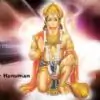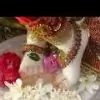Hey guys!!I am back and wanted to share some information(which is very interesting),I found it while surfing the Internet.Bhavishya Purana was written many years ago,but amazingly it tell us about the happenings of today.read on to find more.Source:wikipedia 😊
The Bhavishya Purana (Sanskrit: Bhavishyat Purana) is one of the eighteen major Hindu Puranas. It is written in Sanskrit and attributed to Rishi Vyasa, the compiler of the Vedas. The title "Bhavishya Purana" signifies a work that contains prophecies regarding the future . Despite being labelled a purana , the work relates only a few legends. It is one of several Puranas in which a list of royal dynasties of the "past" are followed by lists of kings predicted to rule in the future.
The text as it exists today is a composite of material ranging from very old to very recent. Portions of the extant text are drawn from the law book of Manu, including the account of Creation which it contains. The Bhavishya Purana is classified as one of the ten Shaiva puranas in the classification system used in the Sivarahasya-khanda of the Sankara Samhita. In the traditional system of classification according to the three gunas given in the Padma Purana, it is classified in the rajas category, which contains Puranas whose central deity is Brahma.
Dating and texts
Dating of the work is problematic. In records of land grants of the fifth century BCE verses are quoted which occur only in the Padma, Bhavishya, and Brahma Puranas, and on this basis Pargiter in 1912 assigned these particular Puranas to an even earlier period. Maurice Winternitz considers it more probable that these verses, both in the inscriptions and in the puranas, were taken as quotations from earlier Dharmashastras, and thus argues that chronological deductions cannot be made on that basis.
According to Maurice Winternitz, the text which has come down to us in manuscript under this title is certainly not the ancient work which is quoted in the Apastambiya Dharmasutra. A quotation appearing in the Apastambiya Dharmasutra attributed to the Bhavishyat Purana cannot be found in the extant text of the Purana.
The Bhavishya Purana itself tells us that it consists of five parts , but the extant printed edition of the work contains only four parts (Brahma, Madhyama, Pratisarga, and Uttara).These four parts have distinctive content and dating.
Brahmaparvan
The greater part of the work deals with brahmanical ceremonies and feasts, the duties of castes, some accounts of snake myths, and other matters. It also covers the duties of women, good and bad signs of people, and methods of worshipping Brahma, Ganesha, Skanda, and the Snakes. A considerable section deals with Sun worship in a place called "Sakadvipa" which may be a reference to Scythia.
Madhyamaparvan
Of the four existing parts of the text, the Madhyamaparvan, which is not mentioned anywhere else as having formed a part of the Bhavishya Purana, is characterized by Rajendra Hazra as "a late appendage abounding in Tantric elements."
Pratisargaparvan
Hazra has the following to say regarding the Pratisargaparvan:
The Pratisargaparvan, though nominally mentioned in the Bhavishya (I.1.2-3), contains stories about Adam, Noah, Yakuta, Taimurlong, Nadir Shah, Akbar (the emperor of Delhi), Jayacandra, ... and many others. It even knows the British rule in India and names Calcutta and the Parliament.
A. K. Ramanujan mentions finding references to Christ, Moses, and Queen Victoria in the "appropriately up-to-date Bhavishya Purana" and cites this as an example of the fact that:
"In spite of repeated efforts to impose schemes and canons on them from time to time, Puranas are open systems."
Thus, Muhammad is mentioned, as Mahamada, in III.3.3.5-27. The passage portrays him as a dharmadu?aka ("polluter of righteousness"), a preceptor of paisacadharma ("ghoulish religion"), and a reincarnation of Tripurasura, a demon whom Lord Shiva will destroy again. However the Ahmadiyya missionary Abdul Haq Vidyarthi argues that the passage is a "prediction" of Mohammad as a reformer.
Uttaraparvan
The Uttaraparvan, though nominally attached to the Bhavishya Purana, is usually considered to be an independent work, also known as the Bhavishyottara Purana, and as such is included among the Upapuranas (Lesser Puranas). The Bhavishyottara Purana is primarily a handbook of religious rites with a few legends and myths. Rajendra Hazra characterizes it as "a loose collection of materials taken from various sources" that is lacking in many of the traditional five characteristics of a purana, but which offers an interesting study of vows, festivals, and donations from sociological and religious points of view.





























